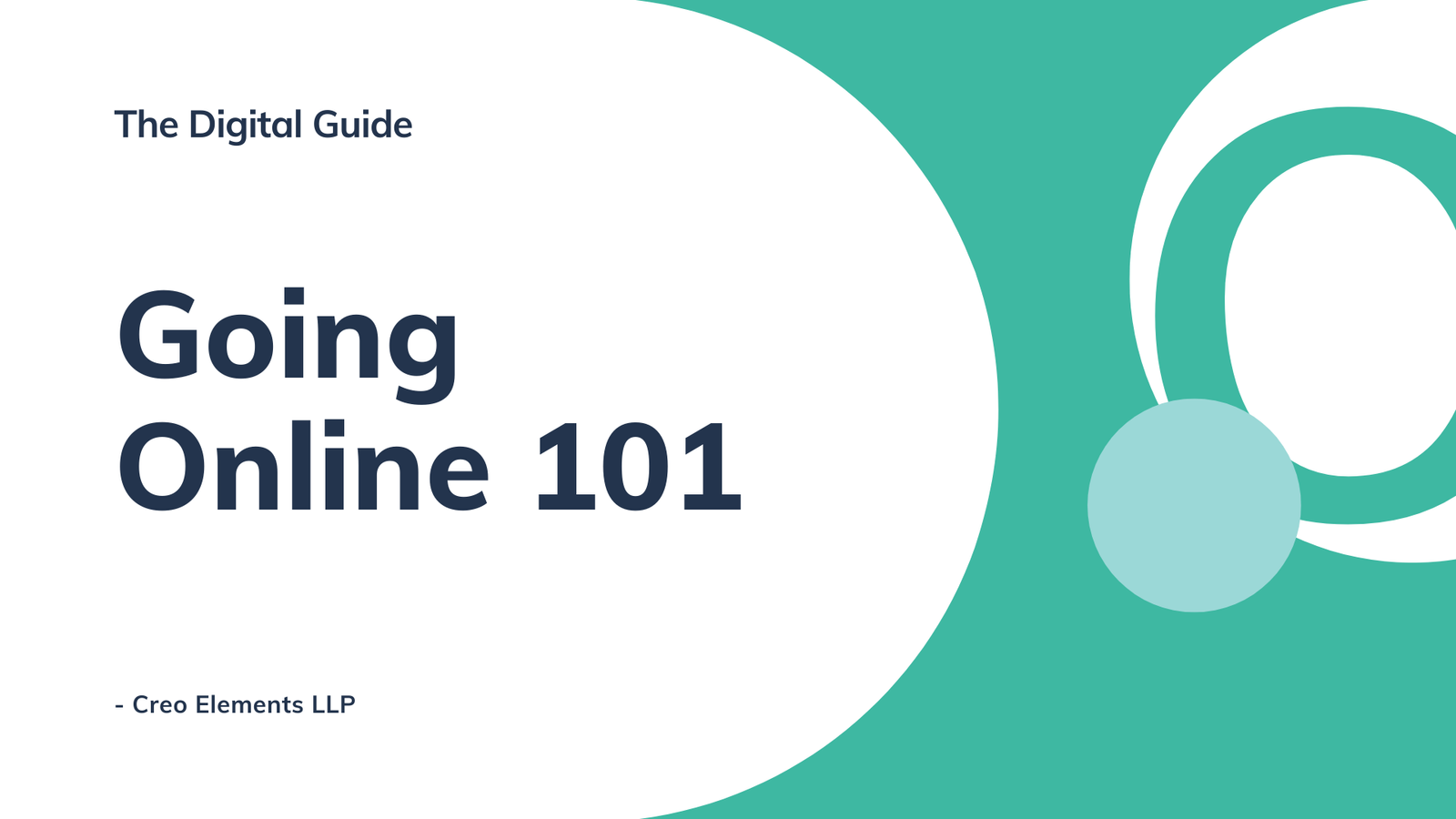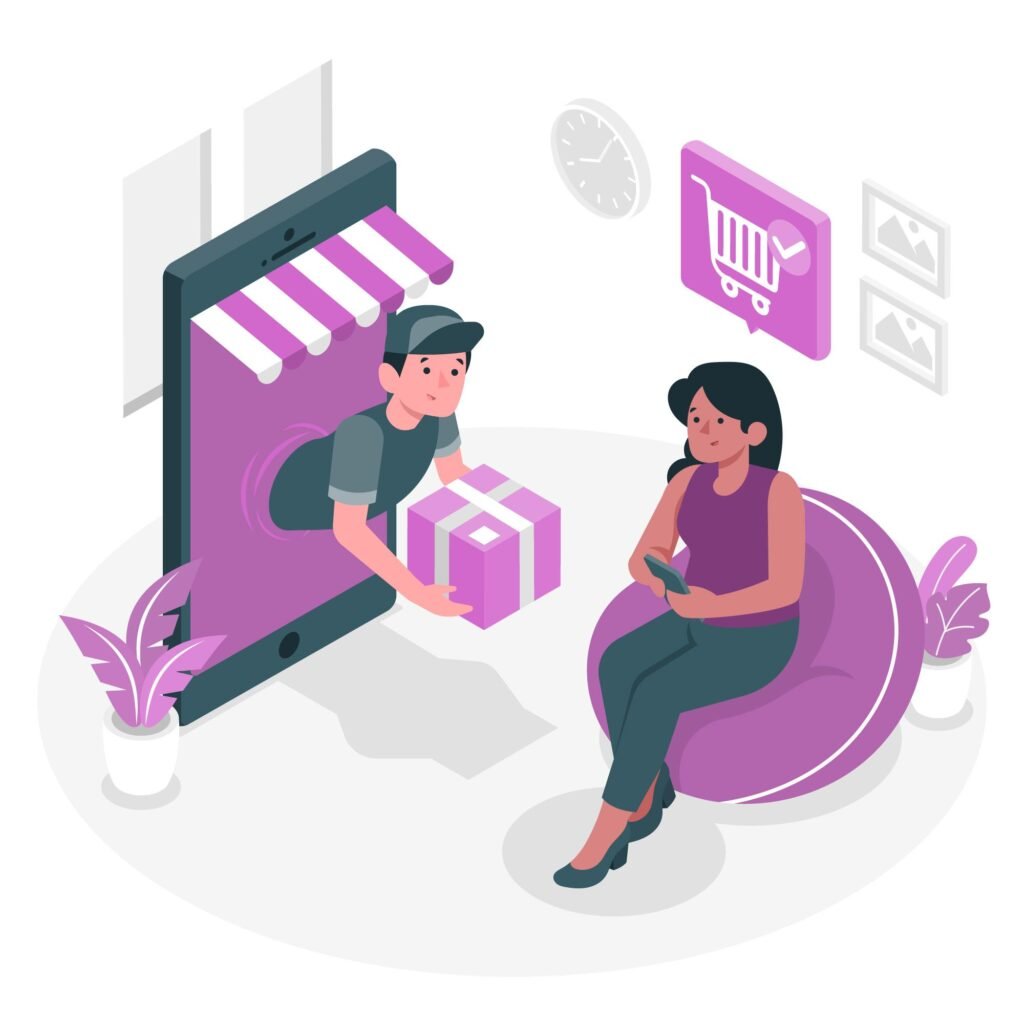Going Online 101: Why and How Your Business Needs to Step Into the Digital World

Introduction
In today’s world, running a business without an online presence is like setting up a shop in the middle of a deserted island—nobody knows you exist. Whether you’re selling handcrafted jewelry, offering financial consulting, or running a local bakery, your customers are searching for businesses like yours online. If you’re not there, you’re missing out on an enormous opportunity.
Going online isn’t just about keeping up with trends; it’s about making your business more accessible, visible, and profitable. The good news? It’s never too late to start. Let’s walk through why stepping into the digital world matters and how you can do it in a way that feels natural for you and beneficial for your business.
Why Going Online Matters

Imagine this: You have a thriving boutique that people love. Word-of-mouth is strong, and your customers always say they wish they could show your designs to friends who live in another city. Without an online presence, those potential customers remain out of reach. But with a digital storefront, they can browse your collections, place orders, and recommend you to their networks—all without setting foot in your store.
Here’s why every business should take their presence online:
- Expand Your Reach: Your business isn’t confined to foot traffic. Online, people from different cities or even countries can discover and interact with your brand.
- Be Open 24/7: Unlike a physical store with fixed hours, an online presence allows potential customers to explore your offerings at their convenience—whether that’s 2 PM or 2 AM.
- Build Credibility: Today, people Google businesses before making decisions. A professional website, active social media, and positive customer reviews make you look trustworthy.
- Keep Up with Competitors: If your competitors are online and you’re not, you’re already giving them an edge. Stay relevant by being where your audience is.
- Connect with Your Customers: The digital space allows for direct engagement—whether through social media conversations, email marketing, or interactive website features.
A robust online presence isn’t just about showing up—it’s about making your business accessible, relatable, and easy to engage with.
Selling Online: More Than Just Listing Products
Selling online isn’t just for retail giants—it’s an opportunity for businesses of all sizes to tap into a global customer base. Whether you sell handcrafted jewelry, digital services, or high-end electronics, an online presence ensures that your business isn’t limited by geography.

Imagine you own a pottery business. People in your town love your handcrafted mugs, but the local market has a cap. By selling online, you open doors for customers from different cities—or even countries—to discover and purchase your creations. However, success in online selling isn’t just about listing products and waiting for sales to roll in. It’s about providing an effortless shopping experience and choosing the right platform to reach your ideal buyers.
Choosing the Right Platform: Marketplaces vs. Your Own Store
One of the first decisions when selling online is choosing where to sell. There are two main approaches:
- Selling on Established Marketplaces (Amazon, Flipkart, Etsy, etc.): These platforms provide instant exposure to millions of buyers. They handle payment processing, offer logistics support (like Amazon FBA and Flipkart Smart Fulfillment), and build trust through customer reviews. However, they also charge fees and limit branding opportunities.
- Building Your Own Online Store (WooCommerce, Shopify, etc.): Platforms like WooCommerce (for WordPress users) and Shopify allow full control over branding, pricing, and customer data. This is ideal for businesses that want to establish a unique brand identity and foster direct relationships with their customers.
Some businesses successfully use both strategies—leveraging marketplaces for initial visibility while building their store for long-term brand growth.
Selling Online Is a Long-Term Strategy
While marketplaces offer a quick way to start selling, building your own store creates lasting value. Many successful brands begin on Amazon or Flipkart but gradually shift towards their independent store to maximize profits and brand control.
The key is to strategize based on your business model, product type, and growth goals. Selling online isn’t just about transactions—it’s about crafting an experience that keeps customers coming back.
Showcasing Your Work: The Power of an Online Portfolio

Not every business sells tangible products. Many businesses—like photographers, consultants, and architects—rely on showcasing their work to attract clients. If a client is comparing two service providers, the one with a professional, updated online portfolio will always have the advantage.
Imagine you’re a wedding photographer. A couple looking for their dream photographer will likely browse portfolios before reaching out. If they find your website with beautifully curated galleries, testimonials from happy couples, and clear contact options, they’re far more likely to choose you over someone who only has a Facebook page with scattered images.
A well-structured online showcase should:
- Tell your story and highlight your expertise.
- Present clear examples of your work in a visually appealing way.
- Include testimonials to build trust.
- Offer a way for visitors to contact you effortlessly.
Digital Branding: More Than Just a Pretty Logo
Branding is what makes a business feel familiar. It’s the reason people recognize certain brands instantly and trust them. Think about the businesses you admire—there’s a reason their presence feels strong, and it’s not just because of their products.
Effective digital branding consists of:
- Visual Identity: Your colors, fonts, and images should create a cohesive look across your website, social media, and marketing materials.
- Brand Voice: Are you fun and playful? Professional and authoritative? Your online content should reflect the personality of your business.
- Consistent Messaging: From social media captions to website copy, your communication should reinforce what your brand stands for.
A strong digital brand builds familiarity, and familiarity builds trust. When people feel connected to your brand, they’re more likely to buy from you.
Being ‘Official’ Online: Establishing Business Legitimacy
Think of the last time you searched for a business online. If you couldn’t find a website, verified social media presence, or Google Business listing, you probably questioned its legitimacy. Customers do the same. Establishing an official online presence involves:
- Setting up a Google My Business profile so your business appears in search results.
- Creating social media pages that reflect your business’s personality.
- Gathering and displaying customer testimonials to establish trust.
- Getting featured in relevant industry directories for added credibility.
The Role of Photography and Documentation in Digital Success

Customers rely on visuals and clear information when making online decisions. High-quality images and well-structured documentation do more than just make a website look good—they help customers feel informed and reassured, ultimately influencing their decision to buy or engage.
Think about a salon. A potential client isn’t just looking for a menu of services; they want proof of expertise. Crisp before-and-after photos highlight results, behind-the-scenes glimpses build trust by showing professionalism, and client testimonials add authenticity. But it’s not just about aesthetics—consistency in visual branding and documentation ensures that potential customers can instantly recognize your business, whether they see it on social media, a website, or a marketplace listing.
Beyond just visuals, structured documentation like service breakdowns, FAQs, and product descriptions help answer questions before they are asked. If your business offers a complex service or product, well-written guides, pricing transparency, and clear instructions reduce confusion and make the decision process smoother. The easier it is for customers to understand, trust, and share your brand, the more likely they are to engage and recommend your business to others.
Turning Online Visitors Into Paying Customers
Getting traffic to your website is just the first step—turning that traffic into paying customers requires a structured approach. This is where a sales funnel comes in, guiding potential buyers from discovery to purchase.
Building a Simple & Effective Sales Funnel
A well-structured funnel ensures visitors take meaningful actions that lead to sales. Here’s how:
- Attracting Potential Customers
- SEO & Content Marketing: Optimize your website and create blogs, videos, or customer stories to bring in organic traffic.
- Social Media & Ads: Use targeted promotions to reach the right audience and generate interest.
- Capturing Leads
- Email Sign-ups & Lead Magnets: Offer value—discounts, free guides, or exclusive access—to collect visitor contact details.
- Engagement Tactics: Quizzes, free trials, and interactive content encourage deeper interest.
- Nurturing Leads
- Automated Emails: Educate potential customers with a series of helpful emails.
- Personalized Offers: Use browsing data to suggest relevant products.
- Retargeting Ads: Remind past visitors about your products through strategic ads.
- Converting Leads Into Customers
- Clear Calls to Action: Ensure purchasing is easy with a smooth checkout process.
- Trust Builders: Showcase testimonials, security badges, and guarantees.
- Urgency Triggers: Limited-time offers or low-stock alerts encourage faster decisions.
- Encouraging Repeat Purchases
- Follow-Up Emails: Thank customers and offer loyalty perks.
- Exclusive Deals for Returning Buyers: Keep them engaged with special discounts.
- Referral Programs: Incentivize word-of-mouth marketing.
By strategically guiding visitors through these steps, you can turn interest into sales and create loyal customers who return to your business.
Building Meaningful Connections Online
Networking isn’t just about exchanging business cards anymore. Online networking means actively engaging with your industry and customers through:
Social Media Conversations: Don’t just post—interact with your audience.
Industry Webinars & Forums: Be part of discussions that matter to your business.
Collaborations & Partnerships: Team up with other businesses for mutual growth.

Taking the First Step
Stepping into the digital world might feel overwhelming, but it’s about progress, not perfection. Start small—claim your online space, engage with your audience, and build from there. Your business has value, and the online world is waiting to discover it.
If you’re ready to get started but unsure where to begin, we’re here to help. Let’s work together to build your digital presence in a way that truly represents your brand.